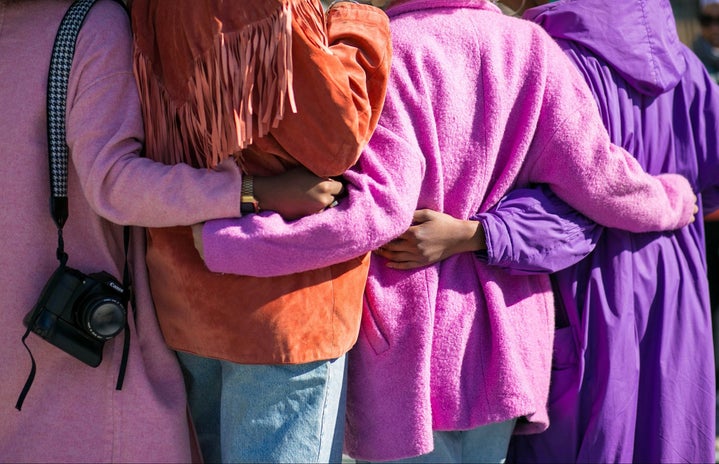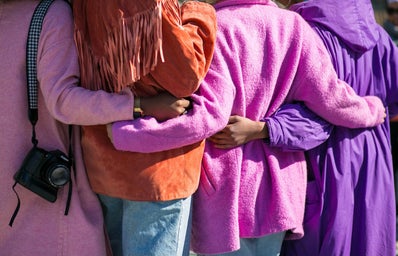It is unquestionable that the influence of black individuals on society stems beyond music, athletics, entertainment and film. Many inventions, such as the air conditioning unit by Lewis Latimer, CCTV by Marie Brown, Lisa Gelobter’s creation of the Gif or Otis Boykin’s invention of the pacemaker and IBM Computer, can be credited to the creative minds of black individuals. Their influence can also be seen in the fashion world, where pieces often address issues such as systemic racism, disenfranchisement of the black community and lack of representation in all areas. Despite the recent focus on black fashion creatives, these individuals have still not received the limelight they deserve. This begs us to ask the question: “why has it taken so long for the rightful creators of fashion trends, styles and culture to receive proper credit?”
One of the primary answers to that question is that white, Eurocentric people and corporations have stolen, appropriated and plagiarized the culture of minorities for centuries. Whether it be the passing of lands as something that was ‘newly discovered’ by the infamous Christopher Columbus with his ‘exploration’ of land already belonging to Native Americans, the rock and roll ballads sung by black artists that Elvis Presley passed off as his own or the designs and indescribable works which black fashion designers, entrepreneurs and visionaries have put into clothing for us by us, there has been a long history of white people failing to acknowledge and compensate the original creators and their creations. This is seen in the irrefutable consumption and mass reproduction of garments sold in this era by fast fashion companies such as Fashion Nova, Revolve and Pretty Little Thing, which have used Instagram and various other social media platforms to drive their success while ignoring, cheating and disenfranchising the very black creatives from which their designs were derived.
For years, black individuals have been the driving force behind a culture that has continuously exploited them. Strong examples of this include hip hop and rap music, which first saw mainstream success in the 90s and helped to popularize high-end designers such as Gucci, Louis Vuitton, Tommy Hilfiger, Dior, Timberland Boots and Ralph Lauren. Ironically, many of these same famous designers clearly stated their ill feelings towards their association with the hip-hop community and ‘urban’ culture, feeling the representation of their clothes in videos, songs and appearances were tarnishing their higher class reputations. It is almost laughable, their lack of acknowledgement and appreciation, as black figures and personalities of the past and present have made these brands mainstream, with several even writing lyrics or even songs dedicated to these fashion brands. The appeal of many of these corporations would be nothing without black voices, as they are the ones responsible for the notoriety of these brands amongst mainstream and younger demographics, unlimited by race… It is hard to fathom why people who are responsible for creating a culture and influence for many of these high-end fashion brands are constantly overlooked time and time again in exchange for white faces. For years, despite black women contributing to the highly sought-after fashion looks and emulated by fashion magazines such as Vogue, few, if any, women of colour were represented by these fashion houses and publications. Naomi Campbell, Tyra Banks, Iman and Beverly Peele were the only women of color to grace runways and magazine covers, many times in a fight against each other to secure a spot as the ‘token black model’. It remains clear that the European standard of beauty remains ingrained within the mindset of not only these designer fashion brands but those who consume them. Brands would rather feature culturally ambiguous looking women who emulate Black features like sun-kissed/tanned skin, fuller lips or curvier physiques, rather than feature the actual black women who are the blueprint.

It remains unquestionable the influence that the black community has had on fashion culture. Gold hoops and jewelry, along with flashy and detailed pieces like ‘buss down’ chains and watches, became prominent in the 1970s, as did streetwear, despite both trends being previously dismissed as ‘ghetto’. Print work, also known as redesigned designer prints, started in boutiques by visionaries like Dapper Dan, who reworked prints, pieces and logos into completely reimagined designer fits. This trend has come back in recent times, inspiring many design brands like Frankie Collective and Revintaged. Acrylic nail art and coloured wigs were previously labelled ghetto, unappealing or trashy, but are now sought after staples for many women looking to change up their looks. Streetwear and sneaker culture was first inspired by black athletes but now have become mainstream due to brands such as Nike and Air Jordan. Countless contributions from the black community have directly influenced mainstream fashion.
There has never been a greater time to support black fashion designers rooted in our own culture who are making designs for us, by us. Here are some you can support any season:



